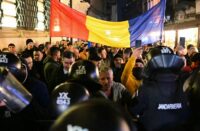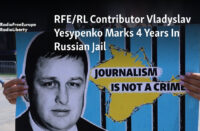During the 1992 Los Angeles riots, the last time a U.S. President invoked the Insurrection Act to deploy the military domestically, Douglas Ollivant, a young Army first lieutenant at the time, was present. According to Ollivant, the operation ran relatively smoothly because the police, not his 7th Infantry Division, were responsible for restoring order. The federal troops were kept away from the front lines and served primarily in support roles.
The six-day riot resulted in the death of 63 people and left 2,383 injured — reportedly none due to military intervention. However, there are concerns that a future domestic deployment of the military could have a different outcome. A debate is emerging within the U.S. military community about the orders it would be required to follow if President-elect Donald Trump, who has previously suggested deploying troops against perceived domestic threats, chooses to act on his warnings.
According to Trump, he plans to declare a national emergency and use the military to carry out mass deportations of illegal immigrants. There are fears that active-duty troops, primarily trained to engage with foreign enemies, could cause bloodshed in a domestic setting. To prevent this, clear rules of engagement need to be established, outlining the extent of force that can be used, particularly in light of constitutional protections for U.S. citizens and residents. However, creating these rules would require extensive training.
Retired Army Lt. Gen. Marvin Covault, who commanded the 7th Infantry Division in the 1992 LA riots, emphasizes the need for discipline and clear rules of engagement. During the Los Angeles riots, Covault ensured lethal force was avoided by instructing his soldiers that they were now operating in a civilian world. However, these rules were set at his discretion, highlighting the need for clear guidelines.
Trump has previously suggested using the military to suppress domestic protests, raid sanctuary cities to remove undocumented immigrants, or defend the Southern border. This has raised concerns within the military community, particularly with the prospect of troops being used for political purposes. During the 1992 riots, Covault received no direct orders from then-President Bush other than to restore peace.
More recently, Trump reportedly considered using force against protestors following the police killing of George Floyd, a Black American. His former defense secretary, Mark Esper, claims Trump asked if they could “just shoot them.” Esper wrote in his memoir that he had to discourage Trump from such ideas.
There are concerns that Trump may not exercise the same restraint in the future, particularly as he appoints staunch loyalists to his Pentagon and national security team. The fear is not just about the potential use of force, but also the regular deployment of troops to serve the administration’s political interests.
Despite the sensitivity of the topic within the active-duty military, retired military officials are discussing it with their peers still in service. Moreover, many military and intelligence officers are expressing their concerns about the potential actions of the incoming administration, with some considering leaving the government.
After the 2020 incident where the D.C. National Guard cleared demonstrators from Lafayette Square using tear gas, rubber bullets, and flash-bang grenades, a group of lawyers founded “The Orders Project” to provide legal advice to troops. This group is being revived with the return of President Trump.
The Lafayette Square incident remains a topic of debate within the military community. Confusion over proper procedures for domestic crowd control and policing reveals a serious training deficiency. Without standard operating procedures, the thresholds for force could be left to the discretion of individual commanders, potentially causing more confusion.
There is a prevalent fear among lawyers and experts in military law about the confusion persisting among serving officers over how the military should behave if Trump invokes the Insurrection Act. Troops may have to obey presidential orders they ethically oppose or face dismissal or court-martial. However, even if called into action, troops must remember to obey peoples’ constitutional rights.
The debate within the military community is largely happening behind closed doors. As a result, some retired military personnel, scholars, and lawyers are attempting to bring the issue to public attention. There is concern that the military’s reputation could be tarnished by an incident similar to Kent State, where four college students were shot dead by Ohio National Guardsmen in 1970.
Troops are predominantly trained to fight wars, whereas local and state police are better equipped to handle crowd psychology. If poorly trained to handle unpredictable, impulsive, and irrational crowds, military personnel might resort to force. While the issue is being widely discussed, it is not openly addressed.
Some lawyers and experts suggest that active-duty troops should be prepared to resist unethical orders, arguing that resistance can be justified if the soldier believes it would jeopardize their notion of military “neutrality”. However, others disagree, arguing that this could lead to widespread legal problems for military personnel.
A standard Manual for Courts-Martial states clearly that “the dictates of a person’s conscience, religion, or personal philosophy cannot justify or excuse the disobedience of an otherwise lawful order.” Supreme Court precedent supports this, stating that “An army is not a deliberative body. It is the executive arm. Its law is that of obedience.”
Ultimately, the debate boils down to whether troops are still bound to do as the President says under the Constitution, even if they believe the order is “lawful but awful”. While most legal experts agree that troops must obey all nominally legal orders, military lawyers stress the importance of remembering to obey peoples’ constitutional rights — including the right to assemble and to be protected from unlawful arrest and seizure or unreasonable force.
In conclusion, the debate within the military community about how to handle potential domestic deployment under the new administration remains unresolved. Future actions will largely depend on the President’s senior legal advisers and court decisions. However, it is clear that this is uncharted territory for the U.S. military.




